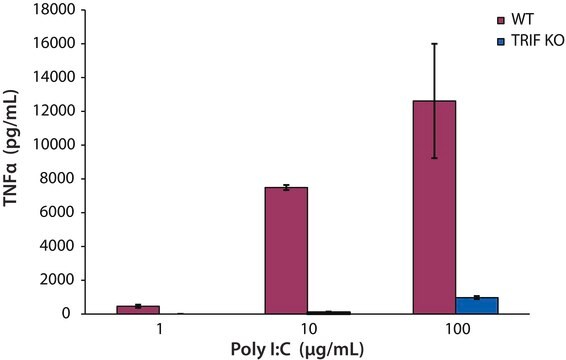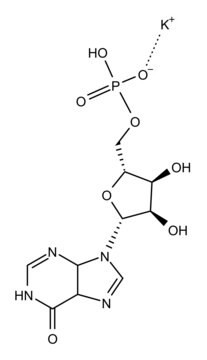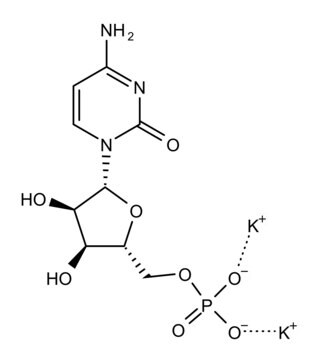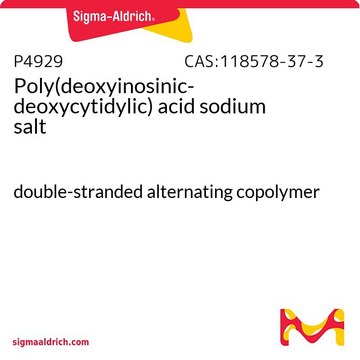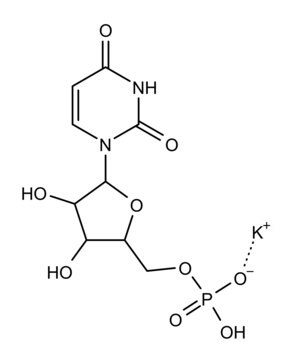おすすめの製品
アプリケーション
TLR3 は二重鎖 RNA を認識し、ウイルスに対する免疫応答の主なエフェクターです。 ポリイノシン-ポリシチジル酸(ポリ(I)・ポリ(C))は、TLR3 レベルでの細胞シグナルを研究するためのモデル RNA として使用される二重鎖ホモポリマーです。 ポリ(IC)は、TRIF 依存的なトール様受容体 3(TLR3)のリガンドです。
生物化学的/生理学的作用
ポリ(I:C)のNIT-1細胞へのトランスフェクションは、細胞内のdsRNAにより誘発されるβ細胞アポトーシスモデルとして用いられています。トランスフェクション後18時間で、NF-κB、p50/p65の核移行、カスパーゼ3および8の切断、カスパーゼ12、Fas、IL-15、TNF受容体関連リガンド(TRAIL)の転写誘導の増加により、細胞の45%がアポトーシスを起こしました。ポリ(I:C)は、安定した成熟樹状細胞(DC)の最も適切な生成因子の1つであることが示唆されています。注入後、この成熟DCは、CD40連結後の生理活性物質IL-12の分泌能により、in vivoにおいて効果的な免疫応答を引き起こすと考えられます。ポリ(I:C)は、ペプチドベースのワクチンに対する特定の抗腫瘍免疫応答強化のため、強力なアジュバントとして用いられました。
包装
容量は、ポリヌクレオチド含量に基づいています。
その他情報
二本鎖ホモポリマ-
調製ノート
本剤には二本鎖構造を維持するためのイオン強度が必要です。約10 mg/mLの水で再構成し、ポリヌクレオチドの生理的PBS溶液を調製します。
保管分類コード
11 - Combustible Solids
WGK
WGK 3
引火点(°F)
Not applicable
引火点(℃)
Not applicable
個人用保護具 (PPE)
Eyeshields, Gloves, type N95 (US)
適用法令
試験研究用途を考慮した関連法令を主に挙げております。化学物質以外については、一部の情報のみ提供しています。 製品を安全かつ合法的に使用することは、使用者の義務です。最新情報により修正される場合があります。WEBの反映には時間を要することがあるため、適宜SDSをご参照ください。
Jan Code
P9582-BULK:
P9582-50MG-PW:
P9582-50MG:
P9582-5MG:
P9582-5MG-PW:
P9582-VAR:
試験成績書(COA)
製品のロット番号・バッチ番号を入力して、試験成績書(COA) を検索できます。ロット番号・バッチ番号は、製品ラベルに「Lot」または「Batch」に続いて記載されています。
この製品を見ている人はこちらもチェック
Marie Anaïs Labouesse et al.
Epigenetics, 10(12), 1143-1155 (2015-11-18)
Maternal infection during pregnancy increases the risk of neurodevelopmental disorders in the offspring. In addition to its influence on other neuronal systems, this early-life environmental adversity has been shown to negatively affect cortical γ-aminobutyric acid (GABA) functions in adult life
Wei-Li Wu et al.
Brain, behavior, and immunity, 62, 11-23 (2016-11-14)
Epidemiological studies show that maternal immune activation (MIA) during pregnancy is a risk factor for autism. However, mechanisms for how MIA affects brain development and behaviors in offspring remain poorly described. To determine whether placental interleukin-6 (IL-6) signaling is required
Jun-Sang Sunwoo et al.
Annals of clinical and translational neurology, 5(10), 1264-1276 (2018-10-24)
Maternal immune activation (MIA) is associated with an increased risk of autism spectrum disorder (ASD) in offspring. Herein, we investigate the altered expression of microRNAs (miRNA), and that of their target genes, in the brains of MIA mouse offspring. To
Halime Kalkavan et al.
Nature communications, 8, 14447-14447 (2017-03-02)
Immune-mediated effector molecules can limit cancer growth, but lack of sustained immune activation in the tumour microenvironment restricts antitumour immunity. New therapeutic approaches that induce a strong and prolonged immune activation would represent a major immunotherapeutic advance. Here we show
William R Crum et al.
Brain, behavior, and immunity, 63, 50-59 (2016-12-13)
Genetic and environmental risk factors for psychiatric disorders are suggested to disrupt the trajectory of brain maturation during adolescence, leading to the development of psychopathology in adulthood. Rodent models are powerful tools to dissect the specific effects of such risk
ライフサイエンス、有機合成、材料科学、クロマトグラフィー、分析など、あらゆる分野の研究に経験のあるメンバーがおります。.
製品に関するお問い合わせはこちら(テクニカルサービス)